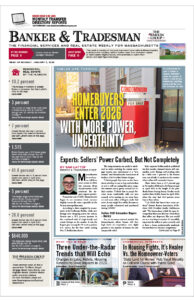It is not often that one disruptive market force includes both a disruptive business plan and a disruptive technology. In mobility, our markets tend to be disrupted by either a new business model (like ride sharing) or a new technology (like autonomous vehicles). The business plan and the technology often merge after the great disruption has occurred (as with Uber and autonomous vehicles), but the disruptor usually is usually either the business plan itself or the technology. A new mobility company in the United Kingdom is breaking new ground in both categories and has the potential to disrupt our mobility ecosystem in lasting ways.
The Rasa, an automobile manufactured by Riversimple, is a first-of-a-kind personal transportation mode operating strictly on a hydrogen fuel cell. The only waste emission from the car is water. Remarkably, there are no greenhouse gasses involved, and there is no carbon footprint. It has a range of approximately 300 miles and even generates energy from braking. In terms of performance and marketability, such a vehicle is certainly competitive with electric and hybrid electric cars for those drivers conscious of their carbon footprint, while producing even greater environmental benefits.
Clearly, the technology and the product itself are disruptive. The only impediment to breaking into the market is fueling stations, which the company is working on in the U.K. Like all disruptive technologies, there is always a barrier to tear down before going mainstream. It is unclear how quickly the Rasa will be seen on streets in the United States, but the mere existence of a hydrogen fuel cell powered car that can be scaled to production is a major milestone.
As if a disruptive technology was not enough, the developers of the Rasa are also pioneering a completely new business model for consumer vehicles. The Rasa is also the first known production car intended to be driven on a subscription basis. The makers of Rasa intend that drivers will not own their cars, but will rather subscribe to the service of being able to drive their car. It is expected that a consumer will sign a subscription contract that is similar in scope to a mobile phone contract. The subscription price, which has a fixed price element and a mileage charge, will be all-inclusive, covering fuel, maintenance and insurance. The parent company also wants to collaborate with gas and oil companies, creating a market for their fuel in a highly cooperative model.
Loss Of Status
I have long believed that subscription services would be the demise of the automobile industry as we know it. As shared vehicles and autonomous vehicles merge, it is becoming more and more apparent that car ownership in urban environments is going to decline precipitously. Car ownership will be replaced by car subscriptions that allow of a single fee for all car related expenses (use, maintenance, fuel, etc.). The Rasa represents that very business model, which I thought would occur gradually over time, but which is baked into their business plan from the beginning. This is a very disruptive business model which, when fully adopted, threatens the very existence of the major automobile manufacturers.
The subscription business model threatens the major automobile manufacturers for multiple reasons, not the least of which is people will simply not buy cars as a consumer good any longer. The cars will be owned by the manufacturers themselves or by middle-men running the subscriptions. Ford, General Motors, Chrysler and the others will all need to own fleets of cars – providing for their maintenance, fueling, operation and nearly continuous motion. This is a very different business model than what they are currently used to (although their involvement in financing has led them part of the way there).
Another, less obvious reason such a business model threatens the major automobile manufacturers is the alignment between profitability, longevity, quality and sustainability. With a consumer sales model, the major automobile manufacturers are only incented to make the car last as long as their competitors. The automobile manufacturer’s incentives are not aligned to a car that will last forever. Some planned obsolescence and turnover is desirable, so that more new cars can be sold.
Unlike the consumer model, the subscription model aligns the automobile manufacturer with a long-term interest in keeping the car on the road. While some consumers will always want to “trade up” to a newer model, fewer and fewer urban Americans are viewing cars as a status symbol. They are viewing cars as something undesirable to own, a mere tool for mobility and experiences that can be rented as needed. As a result, automobile manufacturers will be incented to make sure their vehicles stay on the road as long as possible, and stay in good condition as long as possible, to stay competitive in the subscription market place.
The world of mobility is evolving quickly. New products and business models are springing up at a dizzying pace. In a world where competition is judged by how disruptive your product is, Riversimple’s Rasa is one of the most disruptive market forces of the day. With an estimate of 1.3 million hydrogen fuel cell powered vehicles on the road by 2030 in the UK, the potential growth of this technology is staggering. I am waiting eagerly for this to come to the United States!
William F. Lyons Jr. is president of Fort Hill Cos. of Boston.
This article has been updated to correct some information about what is and is not included in the subscription fee for Riversimple’s Rasa service. Mileage usage will be an additional fee; it is not included in the subscription. The company also doesn’t intend to own refueling stations, but rather to collaborate with existing ones.






